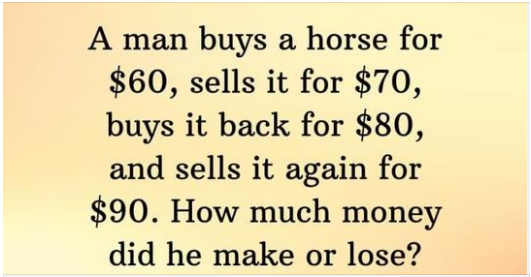
For centuries, a classic math puzzle has been stumping enthusiasts and testing their critical thinking skills. The problem revolves around a man and his transactions with a horse, leaving many to wonder how he managed to turn a profit.
Here’s the scenario: The man buys a horse for $60, then sells it for $70, making a $10 profit. Next, he buys the horse back for $80 and sells it again for $90, pocketing another $10. At first glance, it may seem tricky, but the trick is breaking down each transaction.
By treating each buy and sell separately, the math becomes straightforward. The first $10 profit, from selling the horse for $70 after buying it for $60, is added to the second $10 profit, from selling it for $90 after buying it back for $80. In the end, the man makes a total profit of $20.
This puzzle’s simplicity and cleverness have kept it a favorite among math lovers. So, did you figure it out another way? Drop your thoughts in the comments, and challenge your friends to solve it too!


